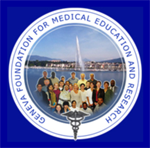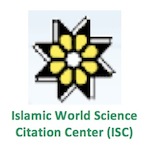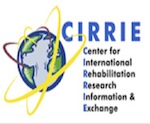Introduction
Globally, the proportion of people aged sixty years or above accounted for 962 million in 2017. Furthermore, it has been projected to increase up to 2.1 billion by 2050 [1]. On the other hand, World Health Organization (WHO) reveals that people aged sixty and above were 1 billion in 2019 and their proportion may increase to 1.4 billion by 2030 and 2.1 billion by 2050 worldwide. In 2019, the elderly aged sixty-five or above accounted for 260 million in Eastern and South-Eastern Asia, 200 million in Europe and Northern America, and 119 million in Central and Southern Asia [2]. Similarly, among development groups, the elderly proportion will be two-thirds of the world’s elderly population (1.1 billion) in the less developed countries of Africa, Asia, Latin America, and Caribbean Oceania by 2050 [2].
World Health Organization describes aging as a developmental element that requires emergency action and responses. The term ‘old age’ does not restrict to an individual’s appearance but refers to their overall well-being, including improved medico-psycho-social conditions. Although most of the elderly are managing well, the health-related issues of this age group are always a serious concern [3]. Similarly, WHO reveals that 15% of elderly aged 60 years and above suffer from mental disorders like depression, grief, dementia, delirium, Alzheimer’s, and substance abuse. Additionally, many of them are at a high risk of neurological disorders and other physical health issues like diabetes, hearing loss, and osteoarthritis. The elderly needs more specialized services along with equal access for all. They tend to have a higher prevalence of chronic diseases, physical disabilities, mental illnesses, and other co-morbidities due to various health needs and problems [4]. It includes their psycho-emotional concerns, social concerns, essential nutritional requirements, financial limitation, inadequacies of the healthcare system, and other physical correlates [5]. Therefore, prevention and control of elderly health problems need a holistic approach that includes health professionals, social welfare agencies, and legal sectors. Additionally, authorities should encourage community-based geriatric healthcare programs to understand the medical and social aspects of elderly health concerns. Furthermore, they can work in other areas like developing gerontology units, providing health insurance, improving health knowledge and primary prevention, providing specialized training to health professionals, and making a strong political commitment to implement health policies to get desired outcomes [4].Therefore, intensive effort should be made by the concerned authorities to understand what mental and physical health means and what factors contribute to physical and mental well-being in old age.
Literature Review
The current study is a small attempt to briefly highlight the complex health concerns of the elderly, including common physical and mental health disorders. It uses secondary data sources and literature reviews to fulfill the purpose of the study. Further, this study tried to explore the health risk of various diseases and their overall impact on the elderly and health care system.
Defining old age
Giving universal definition of old age becomes challenging as most countries have adopted an arbitrary chronological age of 60 or 65 as criteria to describe the elderly population of their countries [6]. It can be used as the threshold criterion because most people are likely to retire from their services or jobs at this age. The developed nations have opted for the chronological age of 65 years to define elderly or older adults, whereas most other countries have taken 60 years [6]. However, there are universally accepted definitions for old age, but it is still inconclusive and debatable at what age a person becomes old. The common use of a calendar age can give a threshold, but it may or may not be uniform with the person’s biological age [7].
Process of aging
The primary manifestations of aging are changes in physical appearance, including wrinkles appearing on the face, graying of hair, slowing down of reactions, difficulties in physical movement, the decline in sensory organs, and chronic illnesses [8]. The aging process is divided into biological, physiological, emotional, and functional categories. More precisely, biological changes refer to the physical changes that can be observed in the structure and functions of the human body, especially during aging. In contrast, physiological changes define the physical changes in the human body that transforms during a lifetime. On the other hand, the functional changes compare the same “age group people” or “those within the group” regarding their inability to sustain normal functioning in their social milieu. Additionally, emotional changes reflect the change in an individual’s attitude and lifestyle during aging. These changes are dependent on an individual’s self-perception of being old [9].
Old age problems/Aging issues
The term “old age” is generally used to indicate the individual’s aging appearance. However, it also implies the decline of social status, including power, role, and position [10]. Aging is a global phenomenon, bringing wide-ranging economic and social consequences. The ratio of the elderly population is one out of ten and it will increase up to five by 2050. This proportion of the elderly in the world population may increase from 11% to 27% by 2050 [11]. The aging population is a crucial matter of concern for the health sector. The elderly are highly vulnerable to various medical and mental health conditions like grief, depression, Alzheimer’s, heart disease, osteoporosis and diabetes, than the younger. Their increasing age is positively associated with higher morbidity and higher demand for health services, including health practitioners, medical consultation, hospitalizations and diagnostic equipment [12].
Similarly, a higher prevalence of mental health problems, including functional dependency and psychological and behavioural issues, can be observed among elderly [13]. Therefore, it is essential to evaluate the available health resources and services to deliver better care and protection. Besides health concerns, it is desired from the families or communities to enhance their social support system to protect the elderly from psychological distress and improve their overall well-being. However, the effectiveness of the social support system varies over the life span of the elderly.
People’s general perception that ‘elder needs less sleep’ reflects their unawareness of geriatric issues. The elderly’s sleep disturbance in late life is associated with their chronic health conditions and socio-environmental factors [14]. Hence, strengthening the social support system and other health facilities can boost the better aging process for the elderly.
Mental health problems
Mental health is a global concern, and it affects every age group equally. The mental health concerns of the elderly may include various psychological issues such as anger, frustration, guilt, lack of confidence and various psychiatric disorders. These psychological issues and psychiatric disorders are discussed below;
Psychological concerns of the elderly
The psychological manifestations of elderly like anger, irritation, frustration, guilt, grief, loneliness, and low self-esteem influence their aging process. These psychological concerns affect their quality of life.
Anger
In many instances, aged persons seem angry, short-tempered, intolerant, or project nasty behavior, which may be caused by the psychological arousal of ageing, environmental factors, or individual differences [15]. Anger predicts the physiological pathway to physical health, which harms the elderly's physical health, including chronic illnesses like cardiovascular diseases, arthritis, and cancer [16]. Therefore, the family has the sole responsibility to manage the anger situation of the elderly and maintain a healthy relationship to protect them from worsening outcomes. Meanwhile, they must understand what is happening and why elders act or behave differently. Thus, understanding the anger issues of the elderly can help families in order to address their psychological concerns.
Frustration
The psychological and physiological change in the human body during the ageing process affects individual functioning and well-being. Similarly, frustration is a common phenomenon during ageing, which may be caused by chronic health conditions, declining ability to accomplish daily activities, interruption in family life, and psychological distress [17]. It leads the elderly to distractive sources or maladaptive coping mechanisms to deal with frustration [18]. The common physiological symptoms may include shortness of breath, knot in the throat, stomach cramps, chest pains, and headache. Similarly, the psychological manifestations of frustration include low tolerance, aggressive behavior, compulsive eating, and increased use of alcohol and smoking [17].
Guilt
These feelings arise from the once perception of moral transgression, including painful effects and feelings of hurting another [19]. It pushes elders to think and consider what they have done and failed to do in the past. The higher frequency of reconsidering the feelings may produce maladaptive consequences for the elderly [20]. Highlighted that older adult’s negative self-perception toward ageing and being burdened on others are closely associated with symptoms of depression and guilt for perceiving themselves as a burden.
Lack of confidence and low self- esteem
It is the most common problem that occurs due to a decline in the physical and mental capabilities of the elderly. Additionally, low confidence is often associated with their dependency on others due to age limitations. On the other hand, self-esteem plays a vital role for older adults. It is defined as the people’s perception of their self-value. Additionally, self-esteem is also inter-linked with improved health, socially accepted actions, and lower levels of depression. Overall, it represents better success in life. Meanwhile, low self-esteem among older adults can be seen as a risk factor for psychiatric disorders like depression and may increase the chances of suicide among the elderly [21].
Psychiatric disorders
The elderly project a range of psychiatric disorders during their ageing process. It includes disorders like anxiety, depression and chronic conditions like dementia, delirium, and Alzheimer’s. These medical conditions need early intervention and specialized care to ensure a better quality of life for the elderly.
Anxiety
Diagnosing anxiety in late-life is difficult among the elderly because it may co-morbid with other psychiatric problems. Anxiety presents differently in the elderly compared to younger adults as they have multiple psychiatric and medical conditions. Anxiety disorders in late life are a “geriatric giant” -being twice prevalent as dementia and 4 to 8 times more prevalent than major depressive disorders among older adults. It has a significant impact on older adult's quality of life, morbidity, and mortality. Treatment of late-life anxiety is challenging due to severe side effects of medication on elderly and frail or medically ill patients [22].
Depression
Primarily the medical conditions of the elderly trigger depression at a late age. It is, directly and indirectly, associated with Parkinson’s disease, stroke, heart disease, cancer, diabetes, thyroid disorders, Vitamin B12 deficiency, dementia and Alzheimer’s disease, epilepsy, multiple sclerosis [23]. Additionally, the prevalence of chronic medical conditions involving pain, disability, and life-threatening illness can worsen the symptoms of depression among the elderly. Therefore, it is essential to have an awareness or sufficient information on elderly depression and subsequent treatment plan.
Grief
Grief describes people’s emotional, cognitive, functional, and behavioral responses to their losses. It indicates the people’s reaction to substantial loss, including loss of employment, status, safety nets, property possessions, and having lost someone to death. Clinically, the elderly might experience many recognizable symptoms, including sadness, tearfulness, fearfulness, aggression, loneliness, fatigue, emotional numbness, poor concentration, forgetfulness, anxiety, and depression due to guilt. The impact of grief is higher on the elderly as they have a long life with more family members and social connections [24].
Dementia
According to the Center for Disease Control and Prevention, Chronic Disease Center, dementia is not a specific disease [25]. However, it indicates the impairment in a person’s remembering, thinking, and decision-making abilities. Overall, it describes a wide range of symptoms associated with memory decline, reducing a person’s ability to perform everyday activities. Mainly, dementia affects the elderly aged 65 or above. On the other hand, early onset of dementia accounts for only 9% of cases [26].Globally, among all types of dementia cases, Alzheimer’s is the most common disease constituting 60% to 80% of its total cases [25]. However, medical conditions like thyroid or vitamin deficiencies can cause dementia.
Delirium
Delirium is a common neuropsychiatric syndrome among the elderly, causing higher morbidity and mortality to those affected [27]. Globally, the initial mortality rate for the elderly suffering from delirium is up to 26%, which may increase to 75% after three years of delirium episodes [28].The Diagnostic and Statistical Manual of Mental Disorders-4 thdefines delirium as a “disturbance of consciousness and a change in cognition that develops over a short period.” It affects people’s working memory and ability to focus, sustain and shift attention. The existing literature suggests that medical conditions, particularly direct physiological factors, are responsible for these disturbances. Therefore, these elderly need more long-term care than the general population.
Alzheimer’s
A chronic neurodegenerative disease usually instigates slowly and deteriorates over the time among the elderly. Alzheimer's is the most common type of dementia. It includes both short-term and long-term progression of symptoms. The early symptom of Alzheimer's is difficulty in recalling recent events. With the progress of the disease, the symptoms even get worse. The elderly with Alzheimer's may experience language difficulty, disorientation, mood fluctuations, low motivation, inability to manage basic hygiene, and behavioral issues [29]. Thus, the progression of the symptoms declines an individual's health condition. They are often found withdrawn from family members and the community. Gradually their bodily functions start deteriorating, leading to death. However, the speed of progression can differ among the elderly with the average life expectancy after diagnosis being three to nine years [29]. The primary cause of Alzheimer's disease is not yet explored enough, as nearly two-thirds of its risk is associated with genetic factors. The other risk factors include a history of head injuries, depression, or hypertension [29].
Substance abuse
With aging, many factors push the elderly into drug or alcohol addiction. It may include retirement, the death of a loved one or spouse, financial constraints, family conflicts, and chronic health conditions, and etcetera. Substance abuse among the elderly can be seen as a “hardy survivor,” especially for those who have been abusing substances for long years, and “late-onset” for those who form addictions at a later age [30]. The diagnosis of elderly's substance abuse is complicated, especially among those whose symptoms are identical to other medical conditions like diabetes, dementia, and depression.
Anorexia
Anorexiaisan eating disorder describe by people’s under-body weight and body image distortion. It is a complex condition that involves various factors, including psychological, neurobiological, and sociological conditions. Anorexia of aging indicates the decline in appetite or food intake in old age. It leads the elderly to under nutrition, causing adverse health outcomes [31]. Anorexia is not limited to the availability of food alone. It ultimately defines how to use food to control life and reduce stress, aggression, and anxiety.
Zayed and Garry explored that diagnosing eating disorders like Anorexia among the elderly is challenging as it is often associated with other psychiatric co-morbidities [32]. Therefore, the occurrence of Anorexia nervosa is higher among this population, particularly among women. Hence, early recognition of the eating disorder can only help family members and health clinicians to provide better care to the elderly.
Bulimia
The psychological condition of a person who has no control over the food intake or during eating is defined as the Bulimia nervosa [33]. In this disorder, food is usually eaten secretly and gobbled down quickly with inadequate chewing, resulting in abdominal discomfort. When the eating is over, the person with this disorder feels guilty and purges to rid his body of the excess calories or food eaten. The physiological and psychological stressors mainly trigger eating disorders [33]. These stresses are elevated due to aging as older adults cope with multiple life changes, including divorce, loss of a partner, declining physical health, and gradually developing bulimia nervosa [33]. Excessive shape and weight concerns are significant characteristics of bulimia nervosa.
Discussion
Physical health problems
Aging comes with numerous physical health concerns due to the declining physical capacities of the elderly. It affects their daily routine, basic functioning and restricts physical mobility, especially outside the home. There are plenty of diseases that make the elderly dependent and physically disabled, including respiratory diseases like cardiovascular diseases, osteoporosis, diabetes, and shingles. These diseases need intensive care and treatment from specialized health professionals. The individual account of the diseases is discussed below:-
Respiratory diseases
The increasing concerns of chronic respiratory disease put a substantial burden on the health care system and patients due to high morbidity and mortality [34]. Among all, tuberculosis is associated as a leading cause of adult respiratory disease resulting in deaths [35]. Similarly, Burney highlighted the concerns of the low-income countries having the highest rate of chronic obstructive pulmonary disease (COPD) due to the high prevalence of smoking and poverty causing deaths and disability [36]. Further, these respiratory diseases are classified into four major sub-categories, including acute and chronic diseases like pneumonia, influenza, chronic obstructive pulmonary disease, and asthma. It also includes occupational lung diseases such as byssinosis, asbestosis, and pneumoconiosis. Additionally, immune-related lung diseases fall under other parenchymal lung disease categories [36]. Thus, these diseases demand more intensive inputs from the government to care for and protect the population like the elderly.
Heart disease
The Lancet Global Health report 1990-2016 reveals that the estimated prevalence of Cardiovascular Diseases (CVDs) in India was 54.5 million [37]. Primarily ischemic heart disease and stroke are responsible for causing CVDs death, accounting for 1 out of 4 in India [37]. These diseases affect patient’s productive years, causing severe socio-economic consequences [38]. Generally, a heart attack is triggered due to cholesterol-rich plaque bursting into the bloodstream, causing a blood clot over the plaque. It completely blocks the flow of blood in the artery and restricts the body’s essential supply like vital oxygen and nutrients from getting to the heart. Similarly, the heart muscle can be badly affected or permanently damaged due to a heart attack.
Cancer
Aging-related factors may hike the risk of cancer disease due to chronic health conditions of the elderly. Cancer can affect all age groups, but its incidence dramatically increases with age. Worldwide, more than 50% of cancer cases occur among people aged sixty-five years or above, and demographically the proportion of this population is increasing [39]. Therefore, intervention strategies should be framed to create healthy environments for people with chronic conditions. These healthy environments promote better age transition of the elderly from midlife to older age and, subsequently, reduce cancer risk.
Diabetes
Diabetes is a serious life-long health condition that occurs when glucose in the blood is too high as the body lacks enough insulin. Therefore, this uncontrolled blood sugar elevates the expected blood sugar level in the body, causing severe health complications like vomiting, increased hunger and thirst, high blood pressure,- and issues with vision [40]. Typically people aged sixty or above suffer from type-2 diabetes due to insulin resistance [41]. Diabetes is categorized into two broad categories, Type-1 and Type-2. Type-1 diabetes is an autoimmune condition where one’s insulin-producing cells are attacked and destroyed by their own body, resulting in a rapid increase in blood glucose levels. The epidemiology of the disease is still unclear, but globally, nearly 10% of the population has Type-1 diabetes [41].
On the other hand, Type-2 diabetes is a condition where the human body does not produce adequate insulin, leading to increased glucose level in the blood. However, Type-2 diabetes is caused by a complex interaction of human genetic and environmental factors, but still, various other factors are required to explore adequately for diagnosis and treatment purposes. About 90% of the people with diabetes have Type 2 diabetes, and more than 50% of them can be prevented by adopting a healthy lifestyle [42].
Osteoporosis
Osteoporosis is popularly known as “Degenerative Arthritis” or “porous bone.” Commonly it is defined by the patient’s low bone mass and structural deterioration of bone tissue. Osteoporosis increases the risk of body fractures, including hip, spine, and wrist, among the patients [43]. It can strike any age group without symptoms.
Shingles
Shingles popularly known as herpes zoster is common among the elderly and people with weak immune systems due to several causes like life stress, body injury, and medications. Though most people affected by shingles recover soon and may not relapse again, there are still chances of getting shingles more than once. Globally, the prevalence of shingles among younger adults is relatively minimal, but it can elevate with advanced age. Its lifetime risk for the elderly is 10% to 30% and may increase to 50% for those aged ≥ 85 years [44]. Similarly, the age-specific incidence of Shingles and the proportion of the elderly population may contribute to the association between shingles and morbidity [45].
Obesity
It is defined as the situation of excess fat in the body, elevating the risk of medical illness and leading to premature mortality [46]. However, measuring body fat mass is difficult as this assessment requires advanced equipment and technologies. Therefore, Body Mass Index (BMI), calculated from body weight and height, is extensively used and accepted as a universal method to classify medical risks concerning weight and height status.
This BMI index measures the relationship between height and weight and correlates with the percentage of body fat in young and middle-aged adults. Obesity among the elderly is not the only concern of morbidity and mortality, but it affects their quality of life. Similarly, it increases the risk of hospitalization among the elderly [47].
Conclusion
Worldwide, aging brings complex health concerns for every individual. Similarly, the rapid growth of the elderly in the world population during recent decades highlighted the greater demand for specialized health services like geriatric care units. Simultaneously, it burdens the existing health care system and economic resources of the country. Thus, it should be the first and foremost priority for every country to understand the elderly concerns and promote their well-being through various strategic measures. It includes initiatives like developing a better healthcare system to accommodate geriatric needs and promote healthy aging for longer and healthier living. Working beyond the traditional approach of care and protection of the elderly, particularly at their home or in residential care homes, can address elderly concerns effectively. Therefore, it requires additional co-operation from other stakeholders, like a private partner, to provide alternative services and ensure the dignity and well-being of the elderly.
References
- World Population Ageing. United Nations. 2017.
- World Population Ageing. United Nations. 2019
- Yarnall AJ, Sayer AA, Clegg A, Rockwood K, Parker S, Hindle JV. New horizons in multi-morbidity in older adults. Age and Ageing 2017; 46(6): 882–888.
[Crossref] [Google Scholar] [PubMed]
- Boutayeb A, S Boutayeb. The burden of non-communicable diseases in developing countries. International journal for equity in health, 2005; 4(1):1-8.
[Crossref] [Google Scholar] [PubMed]
- Shrivastava SR, Shrivastava PS, J Ramasamy. Health‑care of elderly: Determinants, needs and services. International Journal of Preventive Medicine. 2013; 1(1): 1224-1225.
[Google Scholar] [PubMed]
- Till, Celia. Ageing in the twenty-first century: a celebration and a challenge. United Nations Population Fund (UNFPA). 2012.
- Kowal P, Dowd JE. Definition of an older person. Proposed working definition of an older person in Africa for the MDS Project. World Health Organization, Geneva. 2001; 10(2.1): 5188-9286.
[Crossref] [Google Scholar]
- Amarya S, Singh K, Sabharwal M. Ageing process and physiological changes. Gerontology. 2018; 3(7):1-2.
[Crossref]
- Little W, Vyain S, Scaramuzzo G, Cody-Rydzewski S, Griffiths H, Strayer E, et al. Introduction to sociology–1st Canadian edition. BC Campus: Victoria. Canada. 2014. [Crossref] [Google Scholar] [PubMed]
- Chen B, Covinsky KE, Cenzer IS, Adler N, BA Williams. Subjective social status and functional decline in older adults. Journal of general internal medicine 2012; 27(6):693-9.
[Crossref] [Google Scholar] [PubMed]
- World Population Ageing. United Nations. 2017.
- Retooling for an Aging America: Building the Health Care Workforce. Institute of Medicine (US) and Committee on the Future Health Care Workforce for Older Americans Health Status and Health Care Service Utilization. National Academies Press. Washington; United States. 2008.
[Crossref] [PubMed]
- Goldberg SE, Whittamore KH, Harwood RH, Bradshaw LE, Gladman JR, Jones RG. Medical Crises in Older People Study Group The prevalence of mental health problems among older adults admitted as an emergency to a general hospital. Age and Ageing. 2012: 41(1): 80-86.
[Crossref] [Google Scholar] [PubMed]
- Dzierzewski JM, O'Brien EM, Kay D, McCrae CS. Tackling sleeplessness: psychological treatment options for insomnia in older adults. Nature and Science of Sleep, 2010; 2(4): 47-61.
[Crossref] [Google Scholar] [PubMed]
- Altholz JA Smalley Anger in the Aged. The Florida State University, 1981.
- Barlow MA, Wrosch C, Gouin JP, U Kunzmann. Is anger, but not sadness, associated with chronic inflammation and illness in older adulthood? Psychology and aging. 2019; 34(3): 330-340.
[Crossref] [Google Scholar]
- Alavi NM. Frustration: a challenge in chronic conditions. Nursing and midwifery studies, 2013; 2(3): 1-2.
[Crossref] [Google Scholar] [PubMed]
- Vanhove-Meriaux C, Martinent G, Ferrand C. Adaptation and validation of the French Psychological Need Frustration scale for older adults. Ageing International. 2020; 45(1): 99-117.
[Google Scholar]
- Tangney JP, Stuewig J, Mashek DJ. Moral emotions and moral behavior. Annual Review of Psychology. 2007; 58:345.
[Crossref] [Google Scholar] [PubMed]
- Pedroso-Chaparro MS, Márquez-González M, Vara-García C, Cabrera I, Romero-Moreno R, Barrera-Caballero S, et al. Guilt for perceiving oneself as a burden in healthy older adults. Associated factors. Aging & Mental Health. 2021; 25(12): 2330–2336.
[Crossref] [Google Scholar] [PubMed]
- Nguyen DT, Wright EP, Dedding C, Pham TT, J Bunders. Low self-esteem and its association with anxiety, depression, and suicidal ideation in Vietnamese secondary school students: a cross-sectional study. Frontiers in psychiatry 2019; 27(10): 698.
[Crossref] [Google Scholar] [PubMed]
- Cassidy KL, Rector NA. The silent geriatric giant: Anxiety disorders in late life. Geriatrics and Aging. 2008; 11(3):150-156.
[Google Scholar]
- Abdel-Bakky MS, Amin E, Faris TM,A Abdellatif. Mental depression: Relation to different disease status, newer treatments and its association with COVID-19 pandemic (Review). Molecular Medicine Reports. 2021; 24(6): 839.
[Crossref] [Google Scholar] [PubMed]
- Colvin C, M Ceide. Review of Grief Therapies for Older Adults. Current Geriatric Reports. 2021; 10(3):116-123.
[Crossref] [Google Scholar] [PubMed]
- Centers for Disease Control and Prevention. Chronic Disease Center (NCCDPHP) CDC. 2022.
- Global action plan on the public health response to dementia. World Health Organization. 2017–2025, 2017.
- Popeo DM. Delirium in older adults. Mount Sinai Journal of Medicine: A Journal of Translational and Personalized Medicine. 2011; 78(4): 571–582.
[Crossref] [Google Scholar] [PubMed]
- Kim J, P Dārzinš. Delirium. Neurology and Clinical Neuroscience. Mosby, Elsevier, Netherlands. 2007; 141-153.
- Desai AK, GT Grossberg. Diagnosis and treatment of Alzheimer’s disease. Neurology. 2005; 64(12): 34-9.
[Crossref] [Google Scholar] [PubMed]
- Simoni-Wastila L, Yang HK. Psychoactive drug abuse in older adults. The American Journal of Geriatric Pharmacotherapy. 2006; 4(4): 380-394.
[Crossref] [Google Scholar] [PubMed]
- Landi F, Calvani R, Tosato M, Martone AM, Ortolani E, Savera G, et al. Anorexia of Aging: Risk Factors, Consequences, and Potential Treatments. Nutrients. 2016; 8(2): 69.
[Crossref] [Google Scholar] [PubMed]
- Zayed M, Garry JP. Geriatric anorexia nervosa. The Journal of the American Board of Family Medicine. 2017; 30(5): 666-669.
[Crossref] [Google Scholar] [PubMed]
- Hilbert A, Vögele C, Tuschen-Caffier B AS Hartmann. Psycho-physiological responses to idiosyncratic stress in bulimia nervosa and binge eating disorder. Physiology & Behavior. 2011; 104(5): 770-777.
[Crossref] [Google Scholar] [PubMed]
- Murray CJ, AD Lopez. Evidence-based health policy—lessons from the Global Burden of Disease Study. Science. 1996; 274(5288): 740-743.
[Crossref] [Google Scholar] [PubMed]
- Frank E, Speizer, Susan H, Jane B, Arthur S. Respiratory Diseases of Adults. Disease Control Priorities in Developing Countries. Washington DC, 2006.
- Burney P, Jarvis D, Perez-Padilla R. The global burden of chronic respiratory disease in adults. The International Journal of Tuberculosis and Lung Disease. 2015; 19(1): 10-20.
[Crossref] [Google Scholar] [PubMed]
- Prabhakaran D, Jeemon P, Sharma M, Roth GA, Johnson C, Harikrishnan S, et al. The changing patterns of cardiovascular diseases and their risk factors in the states of India: the Global Burden of Disease Study 1990–2016. The Lancet Global Health. 2018; 6(12): e1339-51.
[Crossref] [Google Scholar] [PubMed]
- Abdul-Aziz AA, Desikan P, Prabhakaran D, Schroeder LF. Tackling the burden of cardiovascular diseases in India: The essential diagnostics list. Circulation: Cardiovascular Quality and Outcomes. 2019; 12(4): 51-95.
[Crossref] [Google Scholar] [PubMed]
- Berger NA, Savvides P, Koroukian SM, Kahana EF, Deimling GT, Rose JH, et al. Cancer in the elderly. Transactions of the American Clinical and Climatological Association. 2006; 117: 147-155.
[Google Scholar] [PubMed]
- Wykoff CC, Khurana RN, Nguyen QD, Kelly SP, Lum F, Hall R, et al. Risk of blindness among patients with diabetes and newly diagnosed diabetic retinopathy. Diabetes Care. 2021; 44(3): 748-56.
[Crossref] [Google Scholar] [PubMed]
- Chentli F, Azzoug S, Mahgoun S. Diabetes mellitus in elderly. Indian Journal of Endocrinology and Metabolism. 2015; 19(6): 744-752.
[Crossref] [Google Scholar] [PubMed]
- Galaviz KI, Narayan KV, Lobelo F, Weber MB. Lifestyle and the prevention of type 2 diabetes: a status report. American Journal of Lifestyle Medicine. 2018; 12(1): 4-20.
[Crossref] [Google Scholar] [PubMed]
- Sözen T, Özışık L, NC Başaran. An overview and management of osteoporosis. European Journal of Rheumatology. 2017; 4(1): 46-56.
[Crossref] [Google Scholar] [PubMed]
- Forbes HJ, Thomas SL, Langan SM. The epidemiology and prevention of herpes zoster. Current Dermatology Reports. 2012; 1(1): 39-47.
[Crossref] [Google Scholar]
- Neuzil KM, MR Griffin. Preventing shingles and its complications in older persons. New England Journal of Medicine 2016; 375(11): 1079-1080.
[Crossref] [Google Scholar] [PubMed]
- Abdelaal M, Roux CW, Docherty NG. Morbidity and mortality associated with obesity. Annals of translational medicine, 2017; 5(7): 161.
[Crossref] [Google Scholar] [PubMed]
- Batsis JA, AB Zagaria. Addressing Obesity in Aging Patients. The Medical clinics of North America. 2018; 102(1): 65–85.
[Crossref] [Google Scholar] [PubMed]





























